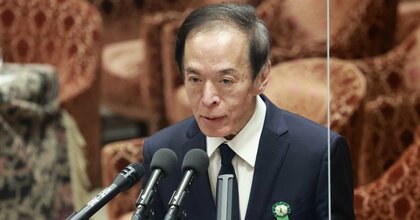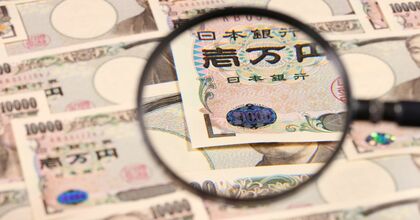Originally published in Japanese on Mar. 20, 2023
Sustained volatility
As of March 8, U.S. markets had predicted that the Federal Open Market Committee (FOMC) would again increase the interest rate at its next meeting in March by 50 basis points and that the Federal Funds Rate peak forecast would rise to about 5.6%. However, these expectations had almost entirely vanished by March 13.
Similar reactions occurred in other major economies. Expectations for rate hikes in the Eurozone, the U.K., and New Zealand fell, and in Australia, they disappeared altogether. In Canada, which had already finished its rate-hike cycle, expectations rose that the central bank would cut rates by the end of the year.
The following day, March 14, the global decline in financial sector stock prices paused, and expectations for an additional 25-basis-point hike at the March FOMC meeting resurfaced. U.S. yields and the dollar recovered slightly, but on March 15, global attention turned to trouble at major Swiss financial institutions, once again putting downward pressure on global financial stocks.
With a renewed sense of the heavy burden placed on financial institutions amid the Federal Reserve’s previous interest rate hikes, markets—especially the financial sector—are expected to stay volatile in the near term. These trends could impact the Bank of Japan’s future monetary policy and, by extension, the yen’s exchange rate.
Reasons for caution
After the BOJ’s surprise monetary policy change in December, there are widespread market expectations that the central bank will again alter its monetary policy regardless of the inflation outlook. The majority view is that these changes will come in the April-June quarter of this year after the new BOJ governor takes office.
The timing of the bank failure in the U.S. makes it difficult to predict its impact on the BOJ: It may cause the BOJ to hesitate in changing its monetary policy, but it may also push the central bank to act.
There are two reasons the BOJ may be cautious about altering monetary policy.
1) Policy changes with higher interest rates
Japanese banks are facing the same problem as the failed U.S. bank: increasing unrealized losses on bond holdings due to rising interest rates. In the Japanese stock market, bank stocks have also fallen with their U.S. counterparts. Ryozo Himino, a BOJ deputy governor, is the former head of the Financial Services Agency, Japan’s finance watchdog. He is expected to pay close attention to the impact of monetary policy normalization on the financial system. Therefore, if market instability in the financial sector persists, the BOJ may become cautious about changing policy along with higher interest rates.
2) Risk-off yen appreciation
Risk-off yen appreciation following the U.S. bank failure and tightening financial environment could be another reason for the BOJ to be cautious in changing monetary policy. While a stronger yen acts to curb inflation, it generally weighs on Japanese stocks. The BOJ is, therefore, unlikely to unreservedly welcome an excessive appreciation of the yen stemming from higher interest rates. The Kishida administration also likely wants to avoid a drop in stock prices as a result of the new BOJ governor, Kazuo Ueda, who was appointed by Prime Minister Fumio Kishida.
Reasons to act
However, other factors could make the BOJ more aggressive in altering monetary policy. The main two are a pause in the rise of overseas interest rates and a significant drop in Japanese yields. On March 14, the yield on 10-year Japanese government bonds temporarily fell to 0.24% in tandem with a sharp decline in overseas interest rates, returning to its level prior to the surprise policy change in December. Now that the rise of overseas interest rates has slowed eliminating yield-curve control is less likely to cause the 10-year yield to spike toward 1%.
The other is increasing wage and inflation pressures in Japan. Looking at the February Tokyo consumer price index, the core (total minus fresh food) was up 3.3% year-on-year, down one percentage point from the previous month due to government measures to reduce the burden of electricity and gas prices. The increase in the core-core (total minus fresh food and energy) reading continued to accelerate to 3.2% year-on-year.
Moreover, in the Shunto spring wage negotiations, many companies, especially large companies, fully met the wage increase requests from their labor unions.
If the outlook report to be released at the BOJ's April 28 monetary policy meeting revises the fiscal 2024 core CPI forecast upward from the January forecast of 1.8% year-on-year, it will likely be interpreted by the market as an increase in the chances of achieving the central bank’s inflation target.
Foreign-exchange movements
Considering these conditions, what is the status of and outlook for major currencies?
After the recent U.S. bank failure, the yen strengthened most among major currencies. While Japanese yields fell as expectations for additional interest rate hikes receded—especially in the U.S.—The yield differential compared with other economies narrowed as the decline in yields was relatively modest, especially for shorter maturities such as 2 years.
In addition, the U.S. bank collapse reminded investors of the 2008 Lehman Brothers collapse, and the plunge in financial stocks left markets feeling wary, increasing the risk-off pressure on the yen. These two trends happened simultaneously and are thought to be placing upward pressure on the yen.
Among major currencies other than the yen, the U.S. dollar underperformed because of the decline in U.S. yields, especially 2-year yields, as well as U.S. bank stocks. The Norwegian krona also fell sharply due to the additional effect of low oil prices.
On the other hand, the Swiss franc, which, like the yen, is seen as a safe-haven currency and is likely to strengthen during risk-off periods, rose more than the yen until March 14 but started falling on March 15 as Swiss bank stocks plummeted.
The Canadian banking sector is traditionally healthy, and the decline in Canadian bank stocks has been modest. However, Canadian yields have declined significantly, as they are more likely to be linked to the U.S., resulting in poorer performance by the Canadian dollar.
The Australian dollar usually moves in tandem with the yuan, partly because of Australia’s high ratio of exports to China. With the yuan holding steady and modest declines in Chinese and Australian bank stocks, the Australian dollar could have outperformed, but its tendency to fall during risk-off periods made it a mechanical sell-off target, and it suffered a relatively large decline.
Looking ahead
If the impact of the U.S. bank failure continues, the yen is likely to appreciate further due to both a narrowing yield differentials and the risk-off environment. If the yen rallies sharply, expectations for additional monetary policy changes by the Bank of Japan will fall. Moreover, the modest decline in Japanese yields will have a very limited effect in restraining yen appreciation due to the BOJ's hawkish stance.
The dollar-yen exchange rate is currently experiencing “excessive volatility,” moving several yen per day. Since a strong yen puts downward pressure on Japanese stocks, which are dominated by exporters, policymakers will begin to consider the possibility of an intervention in foreign exchange markets to curb the yen's strength. However, Japan will not move to buy dollars and sell yen in the near term, as a strong yen helps to curb inflation, which is unpopular with the public.
For reference, the Japanese authorities last intervened to sell dollars and buy the yen when the yen was between 140 and 149 on June 17, 1998, and the dollar-yen plunged due to the Russian crisis and other factors. It was not until January 12, 1999, that the authorities turned to intervention to buy dollars and sell yen when the yen dropped below 110 yen.
(Originally written in Japanese by Masafumi Yamamoto, translated and edited by Connor Cislo)











